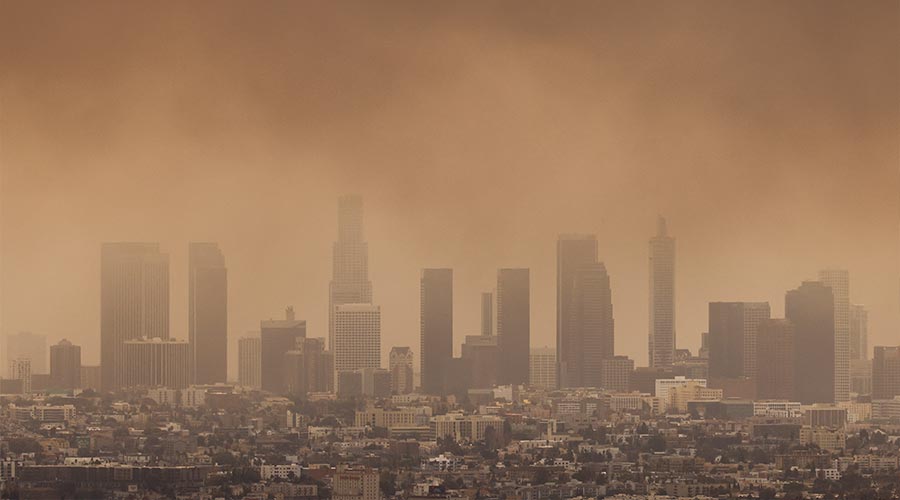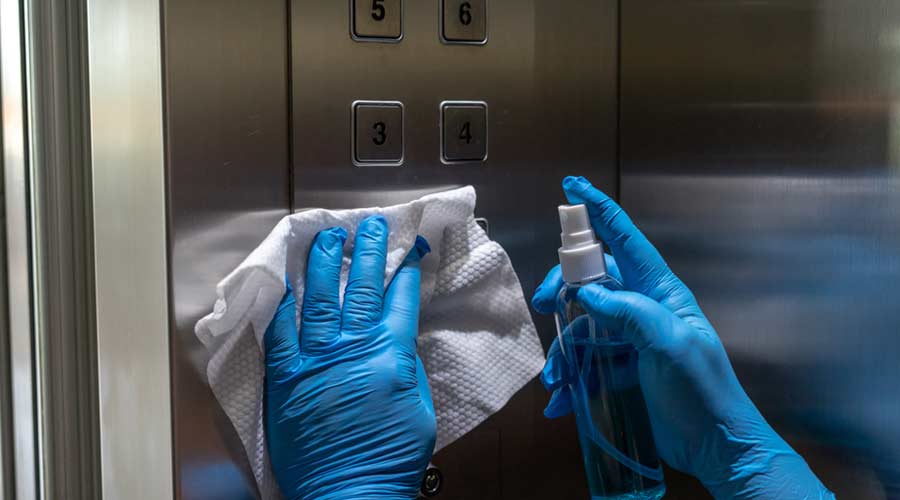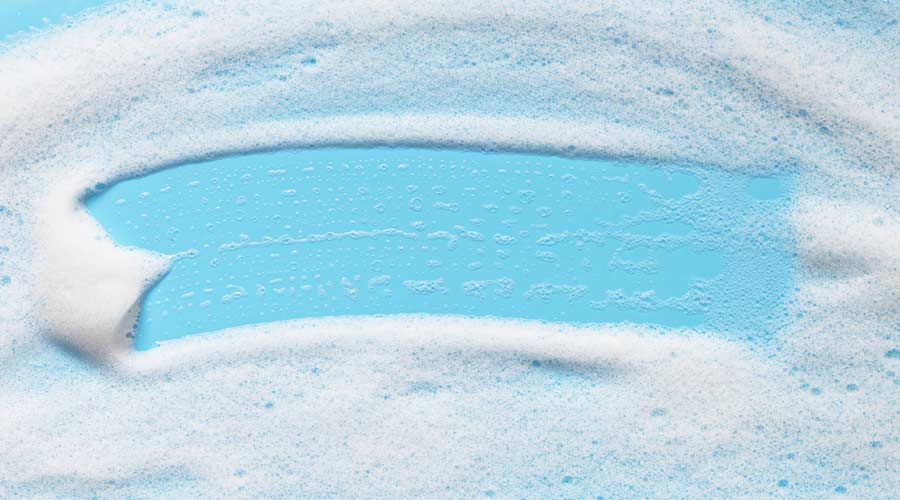
As Los Angeles battles recent wildfires, air quality across the region has plummeted to hazardous levels. Based on authoritative recommendations, many have turned to air filters and purifiers as a defense against smoke pollution. But what if these solutions are not as protective as suggested? It turns out there are widespread misconceptions about wildfire smoke and its hazards, as well as the effectiveness of air filtration in protecting human health against wildfire smoke because this has been an understudied and consequently overlooked area of research. A scientific paper by Metalmark researchers uncovers critical flaws in current filter technologies and their assessment when it comes to capturing dangerous wildfire smoke particles.
"There are a number of misconceptions about the size and behavior of particles generated by wildfires," explains Sissi Liu, CEO and co-founder of Metalmark Innovations. "This leads to a false sense of security when recommending filters tested using methods that don't account for the unique properties of smoke."
The recent fires in Los Angeles have blanketed the region in thick smoke. The South Coast Air Quality Management District has reported PM2.5 levels up to 5 times the federal standard, prompting warnings to stay indoors.
Understanding Wildfire Smoke and PM2.5
Wildfire smoke consists of fine particulate matter (PM) known as PM2.5, which includes particles smaller than 2.5 microns in diameter — approximately 1/30 the diameter of a human hair and smaller. While PM2.5 is a regulatory benchmark, this characterization fails to convey the size distribution of smoke particles. Practically all wildfire smoke particles are much smaller, averaging about 0.1-0.3 microns — roughly 1/350 the diameter of a human hair and smaller. This distinction is critical because smaller particles carrying toxic chemicals are more harmful, penetrating deep into the lungs and more capable of entering the bloodstream.
Key Misconceptions About Wildfire Smoke
Misconception #1. Smoke Particles Are Larger Than 1 Micron
Wildfire smoke particles are predominantly submicron in size, forming as ultrafine particles (UFPs) immediately during combustion. Over tens of minutes, these particles stabilize between 0.1-0.3 microns, allowing them to travel vast distances without significant size changes. This stability means that harmful smoke particles from fires in Los Angeles can affect air quality across the US West Coast and the rest of the US.
Misconception #2. Wildfire Smoke Is Just Like Any Other PM2.5
Unlike urban PM2.5, which often originates from traffic and industrial emissions, wildfire smoke is composed mainly of organic carbon compounds. Fires in the wildland-urban interface (WUI) include the combustion of biomass, building materials, vehicles, electronics, batteries, and more. They introduce additional toxins, including hydrogen cyanide, hydrogen fluoride, hydrogen chloride, isocyanates, dioxins, furans, chlorine, various toxic organic compounds (e.g., benzene, toluene, xylenes, styrene, formaldehyde), heavy metals (e.g., lead, chromium, cadmium, arsenic), and polycyclic aromatic hydrocarbons (PAHs). While some toxins, such as highly volatile formaldehyde, are transported in gaseous form, many of these toxic substances hitch a ride on smoke particles, often reported at diameters 200-300 nm or below, making them hazardous over long distances.
Moreover, wildfire smoke aerosols are dynamic, containing semi-volatile organic compounds that can evaporate and react to form secondary pollutants, further degrading air quality and posing ongoing health threats. Smoke is even known to spread pathogens, contributing to rising cases of Valley Fever, for example.
Misconception #3. Smoke Is Harmless If You’re Far from the Fire
Smoke’s impact from large-scale extends far beyond the immediate vicinity of the fire. During the 2023 Canadian wildfires, for example, smoke traveled thousands of miles and caused hazardous air quality as far away as New York City and Atlanta. Despite the distance, the particle size and toxicity remain largely unchanged, leading to increased respiratory and cardiovascular health issues in affected regions. Research shows that faraway smoke increases cardiopulmonary disease and is associated with up to 1000-fold the premature deaths of the fires themselves.
Misconception #4. Staying Indoors Provides Adequate Protection
Many believe that staying indoors is a sufficient safeguard against wildfire smoke. However, smoke particles infiltrate buildings through gaps, ventilation systems, and even closed windows. Additionally, indoor air quality can degrade due to formaldehyde, ozone, and other chemicals — common byproducts of wildfires that penetrate indoors.
Misconception #5. Current MERV-13 and HEPA Filters Provide Sufficient Protection
While MERV-13 and HEPA filters are touted as effective solutions, they have limitations:
- Suboptimal Performance for Submicron Particles: Most HVAC filters, including MERV 13 and higher grades, are the least effective at capturing particles in the 0.1-0.3 micron range — precisely the size of wildfire smoke particles. Furthermore, their efficacy is not generally assessed for particles in the <0.3 micron particle size range.
- Efficacy Not Tested for Smoke: Standard ratings for filters do not include tests with particles representative of wildfire smoke, which behaves differently on filter material compared to other particulates.
- Short-lived Efficiency: Many HVAC filters on the market are made with electrostatically charged material. They are preferred due to their lower cost and pressure, which in turn ensures lower HVAC energy use. However, the material can lose effectiveness within minutes or hours of exposure to smoke. Some may even release captured particles back into the air.
Similarly, many HEPA air purifiers that also rely on electrostatically charged filters can quickly lose smoke filtration efficiency.
Metalmark's findings underscore that even higher-efficiency filters rated MERV 13 and above may not reliably capture submicron smoke particles. Standard filter test methods do not use smoke similar to wildfire smoke as a challenge aerosol and, therefore, are not representative of real-world wildfire conditions.
"Many MERV 13 and HEPA filters' material employs electrostatic charges to enhance particle capture with the benefits of lower cost and energy use," says Liu. "But our research shows their efficiencies can be rapidly degraded when exposed to smoke, causing the filters to lose efficiency within hours." Since wildfire events can last weeks, now occur year-round, and their impact is far-reaching, these critical gaps need to be addressed.
Tips to Combat Wildfire Smoke
- Shut Down Ventilation: Turn off HVAC ventilation (with outdoor air) and seal windows and doors to minimize smoke infiltration.
- Use High-Quality Air Purifiers: Invest in air purifiers with mechanical HEPA filters (not reliant on electrostatic charges) and sorbents to remove particles and gases. Base your purifier selection on the size of the room and the reported clean air delivery rate (CADR) for cigarette smoke.
- Choose MERV 13+ Mechanical HVAC Filters If Feasible: Mechanical filters offer improved smoke filtration but typically come with significantly higher pressure, which most HVAC systems cannot accommodate. If they are appropriate for your systems, they are a viable choice, though it’s important to note that they may increase HVAC energy consumption.
- Change Filters Regularly: Replace both air purifier and HVAC filters regularly, especially sorbent filters.
- Monitor Indoor Air Quality: Use air quality monitors to track PM2.5 levels (look for particle count concentration trends of PM1.0 and PM0.5 for more insights) and adjust your protective measures accordingly.
The recent fires in Los Angeles serve as a stark reminder of the hazards posed by wildfire smoke. While current filtration technologies offer some protection, there is a pressing need for improved testing and solutions tailored to the unique properties of wildfire smoke particles. Policymakers, manufacturers, and researchers must collaborate to address these gaps and ensure public safety.
"We need to update our testing protocols to reflect the realities of wildfire smoke and improve available air cleaning solutions," urges Liu. "In the meantime, we hope this information empowers people to make better decisions to protect their health."
As climate change leads to longer and more intense fire seasons, managing indoor air quality will be an ongoing challenge. Metalmark Innovations is committed to advancing filtration science and educating the public to meet this critical need.

 The Down and Dirty on Cleaning in Virus Season
The Down and Dirty on Cleaning in Virus Season How Surfactant Use is Expanding in Commercial Cleaning
How Surfactant Use is Expanding in Commercial Cleaning